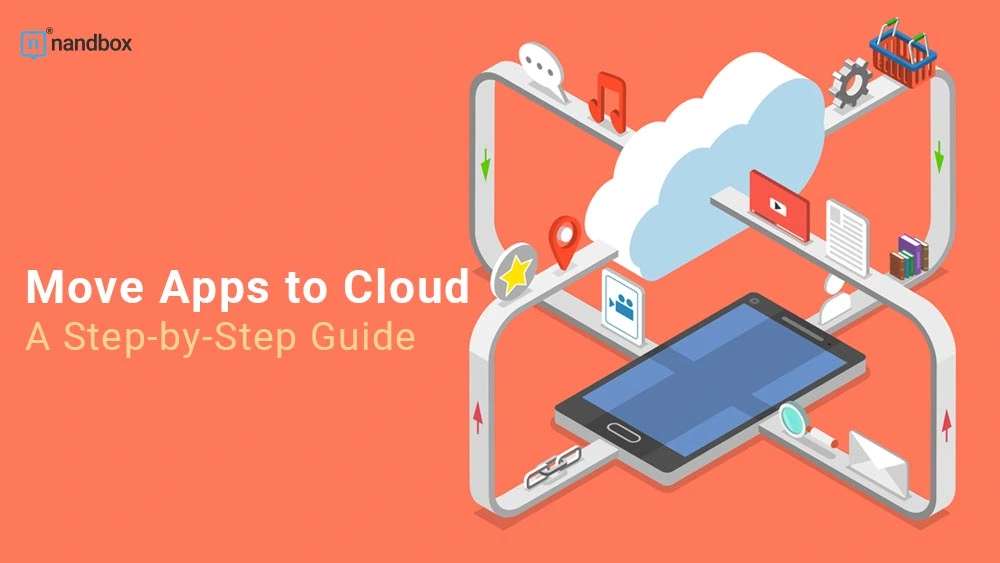Everything You Need to Know About App Migration
The rate at which the mobile application market is growing is unexceptional and astonishing. Each day, we witness a surge in user demand and, in turn, an increase in the number of users. The large number of new users leaves developers and app owners no choice but to expand constantly to keep up with the increased usage. To accomplish this, many developers and app owners turn to moving their apps to a more expanded environment, or, to be more specific and technical, “app migration.” In this article, we will explain everything regarding app migration and how to move apps to the cloud.
What Does Application Migration Mean
Imagine this: you live in a one-room flat. It is perfect, given the fact that you are the only one living there. Now, two months later, you decided to adopt a pet, a great new addition to the family. The situation is still perfect; you two fit into the flat, no biggies. As we all know, one pet is not enough, so you decide to get ten more! In this case, the once-perfect one-room flat won’t fit this number. What do you do now? You move somewhere bigger and more spacious that can fit everyone. This, in simple words and cats, is what exactly “app migration” means.
App migration is the process of shifting your whole application from one environment to another without making any changes or alterations. This environment can mean loads of things; it can mean a new server, cloud, database, or platform. It depends on why you are migrating. The migration process includes moving everything related to the application. This includes the data, app structure, IT processes, etc.
Types Of App Migration
Now that we know what app migration means, let us take a look at the types of migration and the cases where it occurs. One type of migration is migrating from a public cloud to a private cloud. A public cloud is a shared space that can be accessed and used by any organization or application. On the other hand, a private cloud is an enclosed space that is owned by only one organization.
Moving an app to a private cloud, of course, is more secure and flexible than the public cloud, which makes this a widespread case of migration. Another type of migration is the migration from an on-premise colocation data center to a cloud provider like Amazon Web Services (AWS). This means that you are moving all your operations, structure, and application capabilities from physical and on-premises data centers to a cloud server provided by one of the providers. Data migration plays a crucial role in this process, as it involves transferring all the data from the on-premise data center to the cloud provider’s infrastructure.
This ensures that all the important information and assets are seamlessly transitioned to the new environment, enabling businesses to leverage the benefits of cloud computing while preserving their data integrity and accessibility. When considering migrating to a cloud provider, it’s essential to explore the options available in the market. A list of top cloud providers includes some industry giants, offering a range of services tailored to different business needs, from computing power and storage to AI and machine learning capabilities. Making an informed decision about which provider to choose involves assessing factors such as pricing, performance, security features, and compatibility with existing systems.
Six Steps to Accomplish Effective Application Migration
1.) Identify Your Purpose or Goal of App Migration
The first step to accomplishing an effective migration process is to specify your purpose and goal. Meaning that you need to exactly determine why your application needs a migration process. Whether you’re looking to improve application security or speed, knowing the specifics of your organization’s migration requirements will be a huge assistance.
2.) Evaluate Your Application
In order to move forward with your app migration process, you would need to evaluate your application. During this evaluation, you’d need to go through the whole application system and operations to specify which app migration strategy would be perfect for you
3.) Plan the Migration Strategy
After evaluating and specifying the app migration strategy, you now need to plan how you will implement this strategy. This includes defining your goals, checking the requirements for migration, and choosing suitable tools. There are six app migration strategies to choose from which are
- Rehosting
- Replatforming
- Repurchasing
- Refactoring
- Retiring
- Retaining
4.) Test Your Migration Strategy
To avoid any pitfalls, you would need to test your migration strategy first. In this step, developers usually create an imitation of the chosen migration strategy and see if it is going to work with the application or not. This will help in identifying any issues that may arise and fix them before the actual migration.
5.) Migrate Your Application
Now that you’ve tested your migration strategy, you are ready to go. Usually, migrating an app or moving an app from one cloud to another can’t be accomplished in one go; instead, developers carry out this step in stages.
6.) Follow Up on Your Migration Process
After completing the migration process, developers would need to maintain and follow up on the whole thing. Executing tests to confirm that the migration was successful helps achieve this step.
Purpose of App Migration
Providing Scalability
One of the main purposes of app migration is to provide scalability. As your business grows, your application needs to be able to handle increased traffic and usage. By migrating to a more scalable environment, you can ensure that your application can take the increased demand without experiencing downtime or performance issues.
Enhance the App’s Security
Another essential purpose of app migration is to enhance the security of your application. When considering app migration, it’s essential to also think about security measures. Migrating your apps to cloud environments necessitates good security practices to ensure data protection and compliance with regulatory standards. To better understand this crucial aspect, you can learn what cloud security is and how it plays a key role in a successful migration. Applications may have vulnerabilities that can be exploited by attackers, putting your business and users at risk. By migrating to a more secure environment, you can ensure that your application is protected from potential threats and that your data is secured.
Improve Operations and Increase the App’s Speed
App migration can also improve the overall operations of your application and increase its speed. By moving apps to a more developed and efficient application cloud, you can take advantage of new technologies and features that can enhance the performance of your application. This can lead to faster load times, smoother user experiences, and better overall functionality.
Challenges of Application Migration
Just like everything else, app migration also has its pros and cons. One of the common challenges of moving apps to the cloud is dealing with technical and performance issues. This can include compatibility issues with the new environment, slow performance, or crashes. Another challenge of application migration is the potential for increased costs. This can be due to various factors, such as expensive migration tools, upgrades, or the need for an experienced development team to manage the migration process. But what if I told you that you could achieve all the purposes of app migration without actually going through the process?
No Need for App Migration With nandbox
Nandbox is a leading no-code app builder that allows developers and non-developers to create native apps. The app builder functions with a powerful cloud infrastructure, so you don’t need to worry about setting up and migrating to new servers or a better cloud. nandbox applications function smoothly and without interruptions, since they are hosted on a highly available and secure cloud platform. Furthermore, nandbox is highly scalable, making it easy for developers to scale their applications as required. This way, you won’t need to migrate your application each time it gets a large number of users and high usage. These robust capabilities are also offered at a great price. You would get high scalability and stable, powerful clouding services for only $49 per month! It can’t get any better, waste no time, try the nandbox app builder today and move apps to the cloud!








